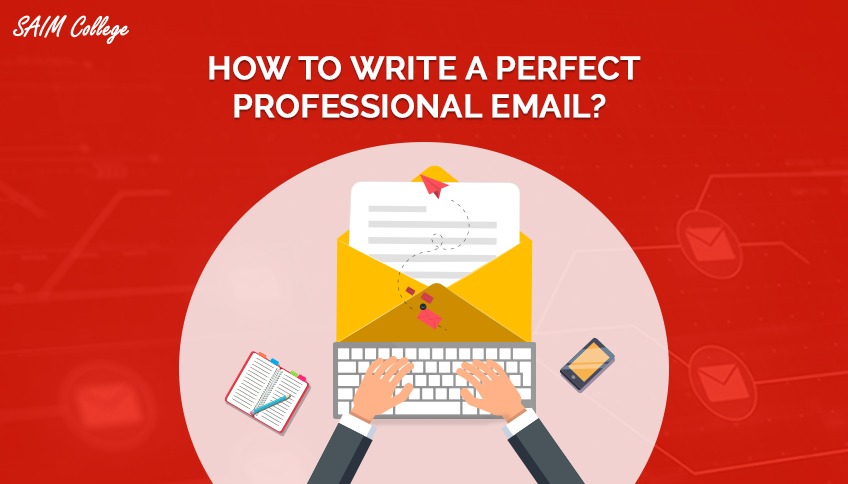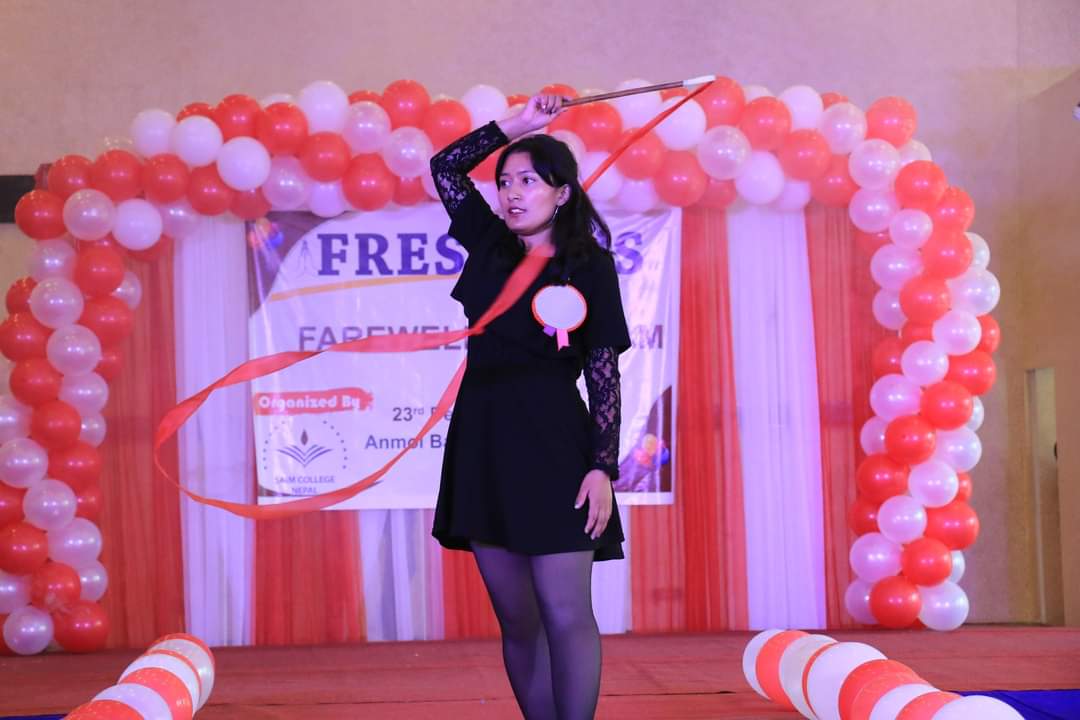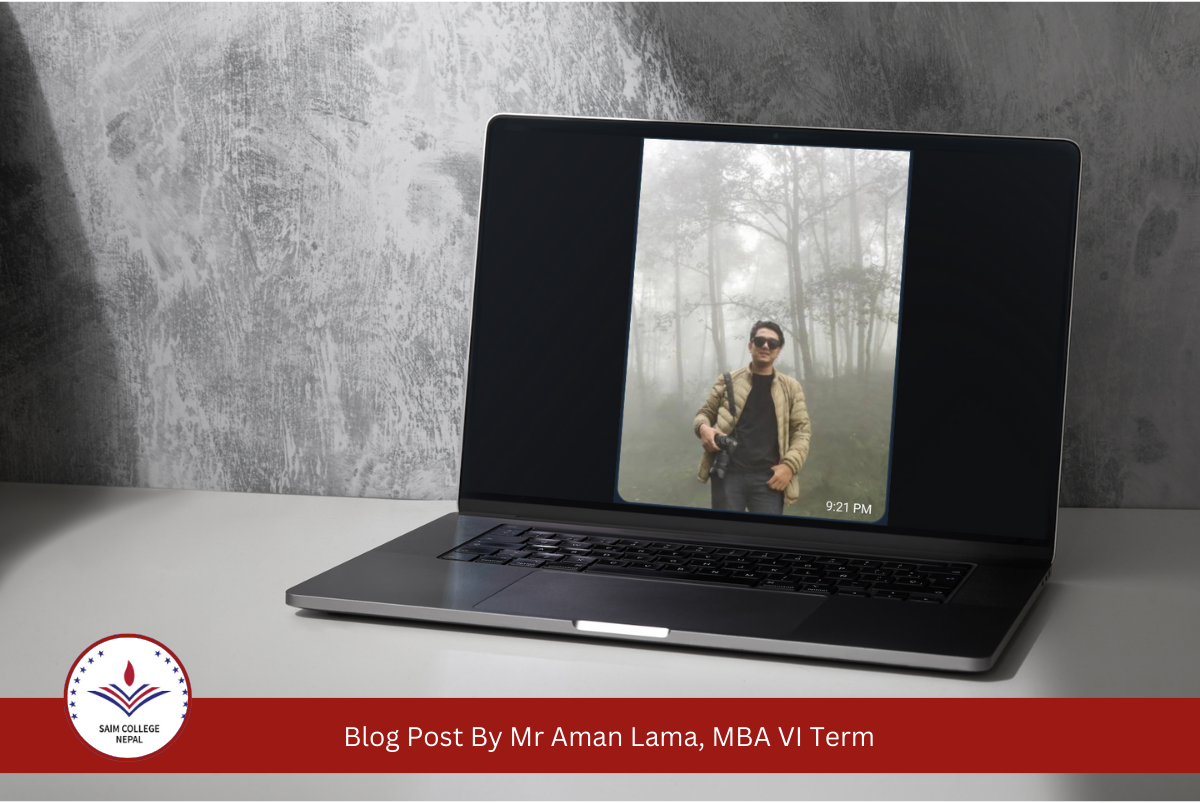How to write a perfect professional Email? | SAIM College
2023-04-06
Email is the most preferred form of written communication in the business world, so it’s critical that you know the key elements of writing a perfect professional email. A well written professional email labels you as a professional communicator. Moreover, writing a good professional email makes a good impression upon people you are communicating with.
When it comes to writing a professional email, most of them lack formality, and it becomes more difficult to convey the right message in writing. Since email represents an effective means of spoken communication, you have to start with a greeting, communicate your message clearly and end with the conclusion. Whether you are writing a job application, thank you email or writing a work related email, make sure that you communicate the messages clearly.
So, how do you craft a professional email? Here are some guidelines that you can apply when writing a professional email.
Know your Purpose
When writing a professional email, you must have a clear purpose. Then, it becomes easier for you to craft the right message with the recipients. Furthermore, it saves you a lot of time, and make you an efficient communicator. So, before writing a professional email, ask yourself:
Why you are sending an email?
What do I want from the recipient?
If you can’t answer these questions, then there is no reason to write a professional email.
One thing per email
When it comes to writing a professional email, always adhere to “one thing rule”. In other words, you need to communicate one thing in one email. Your email should be concise and straightforward so that the recipient understand your message. Also, you are more likely to get a response if you include one subject in your email.
Note that if you need to communicate with various subject matters in a single email, make sure you write another email for each subject matter.
Follow the standard structure
Just like other forms of business communication, a professional email should be succinct and organised. Here is a simple structure of a professional email:
- Good Subject Line
- Greetings
- Introduction
- Purpose and Details
- Call to Action
- Closing Remarks
Let's look at each of these in depth.
Good Subject Line
A subject line is the first thing your recipient will see before opening an email. A good subject line helps the recipient to understand the purpose of your email. Moreover, a good subject line increases the open rates of your email as well as getting a response.
Think of it this way, how many emails go unread in your inbox everyday. Since email is widely used to communicate in the workplace, there is a high chance that your email goes unread. That’s why writing a subject line that grabs the attention of your recipient is crucial.
Here is an example of a good subject line:
- Request for recommendation
- Meeting date changed
- Follow up about …(subject)
- Career: Resume for a ….job
Examples of a subject line to avoid:
- “Urgent”
- “Please reply immediately”
- “Read before you reply”
- Blank (without a subject line)
- Thoughts needed on (X) topic
Greetings
A greeting makes a good impression on your recipient. Depending upon the person you are writing a professional email, your greeting should be either formal or informal. Here are some examples of a professional greeting when writing to a person:
“Dear, [Name]” , “Hi, [First Name]” or “Hello [Name]
Another approach is using title of the recipient when writing to an organization. For instance, “Dear Hiring Manager” is an example of a typical greeting when writing a job email. However, you should avoid generic greetings such as “Dear Sir/Madam”, or “To whom it may concern” when writing a professional email.
Introduction
After initial greeting, you need to introduce yourself, especially if you are writing to a person for the first time. You can give a brief introduction about yourself and what you do briefly in one or two sentences. This helps the recipient to know about you and your background, and it further makes it easier to communicate your message with authenticity.
Besides, you can start with a compliment when writing an introduction. For example,'' I enjoyed your presentation about [topic] on [date].”, I found your blog post on [topic] really helpful.”,”It was good to meet you at [event].” similarly, if you are writing to a well known person, you can start with “I hope you're well.” or “How are you?” ,will be sufficient.
Purpose and Details
Before you approach the details, you need to state a clear purpose of writing a professional email. For instance, if you want to request information, you can write your purpose by saying, “I am emailing to inquire about…” or “I wondered if you could help with….” Similarly, if you are responding to your recipient email, you can write, “I am writing in response to….” You can state your purpose in one or two sentences, and in case you need to explain in detail, you can attach a document and refer to it in your professional email.
In the body of email, you can mention details regarding the action you want from the recipient. Moreover, you can impart all the information that you desire. This might include relevant details, data, contact lists, or any contextual information you like to communicate. However, you should avoid lengthy, irrelevant and vague information. The point is to keep your message short and make it clear to the recipient.
Call to Action
A professional email should state a clear call to action so that your recipient will understand what to do. Make sure you express what you want, from whom and by when, making it clear to your respondent. If you are requesting for a meeting, you should include time and date in your email. For instance, “If Wednesday works for you, how about meeting at 2 P.M? If that doesn’t work for you, I’m free at afternoon, so feel free to suggest an alternate time.”
Closing Remarks
At the end, you should use closing remarks when writing a professional email. You can choose a professional signoff such as: Sincerely, Yours truly, Thanks again, Best wishes, Thanks in advance, just to name a few.
Similarly, you can end a professional email signature with appropriate contact information in three lines. Include 1) your name, 2) title and company name, and 3) phone number respectively. Also, you can add a link to a social media platform along with any legal disclaimer if required by your company beyond these three lines.
Proofread
Till now, you are nearly done. Before you hit your send button, make sure you take a moment to proofread. Ensure that you check for grammar, punctuation, spelling and font style. Similarly, you need to delete any unnecessary words, sentences, and paragraphs as you proofread.
If you follow these procedures, you will be able to improve your professional email writing. At South Asian Institute of Management (SAIM College), we are dedicated to providing helpful information to our students and prepare them for their future. Our BBA and MBA programs prepare students with a conceptual foundation and practical skills in various areas of management and business practices. For more helpful information, read our Blogs or Contact Us.














